Indepth: Podcasting in India Part 2 - Opening a whole new gateway for brands
Continuing with Adgully’s deep-dive into the podcasting space in India, in the second and concluding part of this Special Feature report, we examine the ways to successfully tap the monetisation opportunities for podcasting as well as the future growth prospects.
In Part 1 of the report published yesterday (June 25, 2018), experts gave their insights on the massive potential of podcasting in India and also highlighted the factors holding back its growth. They also threw light on the listening culture in India.
Expressing his optimism regarding the growth of podcasting, Honey Singh, CEO & Co-Founder, #ARM Worldwide, said, “One of the main reasons for podcasting’s popularity is that it offers ad-free content without any incoherent noise of television and radio – well-researched and well-thought-out content. Also, through a podcast, one can share their ideas in a significant way. It is like how blogging once was. The potential is high because the form of inter-dependency is high in India. It’s all co-related. YouTubers can turn their channels into podcasts and publish their content. DJs and musicians are using this platform to release their albums because of the wide reach. Podcasts today have a reach of 1 million and growing, with people from different backgrounds like politics, education and food using this platform as they have realised its potential. The prospective of podcast will be dependent on the kind of content it delivers.”
At the same time Singh noted that podcasts work in a slightly different manner than other media such as radio and TV. According to him, it’s a format for exchanging information, but with no ads, jingles or songs involved. “The scenario is a little tricky and the appeal is entirely different, because the visual factor is missing so far. Also, listening to someone without participating or absence of visuals might be a reason for people to not opt for this medium. Another reason which might be holding it back is that the existing genres are not versatile. The content should be more inviting, more engaging and attractive to the audience. Another reason could be the strong grip of radio in India. The dominance that radio has and the kind of engagement they have incorporated amongst their listeners are also the reasons for podcast being under-leveraged in India,” he added.
Tapping the monetisation opportunities
Podcasts open a whole new gateway for brands. They help in building brand recognition and trust among consumers. The podcast is mostly funded. Therefore, a brand can help the content creators with relevant genre that it wants to advertise to its listeners and together they can create advertising opportunities. Podcasters who are unique and have a very good reach can be a good choice for brands. The market is progressing, and brand strategies need to be modified. Implementing the changes will generate financial efficiency.
Honey Singh noted that podcast as a medium is unique in terms of function. It is a great marketing tool if leveraged properly. “Podcast is like a personal blog, which depends majorly on listenership. Even in this medium, content is the key and the most important part in getting an audience. Content creators/ podcasters should be focused more on the quality of content they are offering and how engaging it is. Studying the audience’s current interests and developing content around it can help create a USP in the market and build the required audience base. For instance, All India Bakchod started off with podcasts. And the most important thing was the quality of content and their niche – good comedy – which helped them develop high listenership that automatically attracts brands. Focusing on the trending keywords while searching and adding them in the podcaster’s content can help lead the relevant audience connect. The content creators must understand that the market is evolving, and trends are changing fast. They need to grow with it.”
“My read on the situation is that most large brands are looking for larger opportunities,” observed Amit Doshi, Founder/CEO, Indus Vox Media. He added that the talk content space or the podcasting space is still relatively small compared to doing something on YouTube with advertising or advertising on television channels. For a large brand that becomes one of the challenges. Another challenge is that this is still an experimental medium for a lot of people, so if they have smaller marketing budgets, it becomes a little tougher to get into.
At the same time Doshi added that now, a major turn is being seen. “We have been talking to many different brands over the last couple of months and a bunch of them are keen to get into this. Till now, we are in the early stages of podcasting and that has been one of the biggest reasons brands aren’t getting into it. I think this is the best way to look at it. Podcast are still very nascent in terms of what this business is going to be and where it is right now. It is always a struggle to get brands to come in, but once they start coming in, other brands will look at it and ask themselves, if they are doing it why aren’t we getting a benefit out of it? That is something we are just beginning to see the start of.”
Meanwhile, Shekhar Mhaskar, EVP, Isobar, felt that before even thinking of monetisation opportunities in podcasting, the industry needs to encourage the building of a strong base in the form riveting content, channels of distribution, and more importantly the listenership.
He added, “While it’s a great aim to achieve, it is far-fetched, looking at the current conditioning of the minds of marketers. They are finding it hard to move away from traditional media opportunities, and step into the plethora of opportunities in digital. Branded content on digital videos is itself gathering momentum as of now, and clients are warming up to this.”
Giving Moneycontrol’s perspective, which recently started its podcast service in the finance genre, Gautam Shelar, Business Head, Moneycontrol, said, “We will try to monetise the podcast when critical mass is achieved. I think there is an opportunity to monetise our experts give advice podcast, which is very specialised in nature and we plan to do that at some later stage.”
Speaking further on the kind of content lined up, Shelar said, “In the next few months, you will see renowned market experts doing a weekly podcast show on Moneycontrol. I don’t want to reveal their names now, but they are very big investor names in the Indian economy who will be doing a weekly podcast for Moneycontrol. Hopefully, we will line up more well-known investors, fund managers, policy makers, corporate CEOs, the line is slowly building up and it looks promising.”
Moneycontrol will have two types of podcasts – some will be shorter in length of 2-3 minutes, while the podcasts that will be done weekly will be longer and will talk in-depth about things like management.
Growth talks
Citing the example of his own company, Indus Vox Media, Amit Doshi informed, “We are probably the largest podcasting network and I know what kind of revenues we are seeing. We are not quite breaking even just yet, but are doing quite well with our listener base. We grew by 12 times last year and that was entirely organic. The second we start putting marketing behind it, we expect that number to double or triple.”
And there have been no dearth of brands that are ready to associate with podcasting networks. As revealed by Doshi, “We have been working with a few; recently a brand called Setu, which is a modern health supplement brand, came on board. In the past, we have done stuff with a company called Storytel, which is an audiobook provider. We have worked with Moja Club, WowTables, and then we have done some AFP type stuff for HDFC, Empower, which is the CSR arm of the Aditya Birla Group. We approached some of them, while some approached us on their own.”
Moneycontrol’s Shelar sees podcasts as a natural evolution for the company. It has tied up with Audioboom as its distribution partner. The podcasts are also available on the moneycontrol.com platform. He added, “We will look at syndication later on, maybe we can get in touch with other content distribution companies. But right now, we are just trying to grow the user base and get the podcast mix right in terms of content, quality. Eventually we can look at larger distribution plays and look at different content from different companies. We have set 100,000 listeners per week as an internal benchmark and would be happy to cross that.”
Indus Vox Media’s Doshi shared that his network gets requests fairly regularly even though they are not an open platform, but a curated platform. “We do take some people on like that though, our new show ‘Football Twaddle’ came on like that, so it’s not like we don’t take on shows, we absolutely do take shows on. We are planning on doing some stuff for Pragati Magazine. Every quarter we try to get out 6-8 new shows.”
Mantra for future growth
Isobar’s Mhaskar believes that in the clutter of TV, Radio, and their avatars on the Internet, being niche is the best for podcasts, at least for a few years. “When it would go mainstream, I fear it will lose its charm. But let’s see how it shapes itself up.”
According to him, “To grow listenership, podcasters have to strike a chord with the interests of the discerning listeners. They get bored easily with the existing channels and the content therein. Be unique, be relevant, be entertaining – that’s the mantra. If you get this right, business will follow.”
For #ARM Worldwide’s Honey Singh, podcast is a great marketing tool for advocacy. It is still growing in India, but offers ample monetary opportunity. He, too, stressed on podcasters being active thoroughly to build up their listener base.”
His advice to podcasters:
- Thoroughly research on what will sound good on a podcast.
- Analyse trending topics and what the audience wants and give it to them.
- In order to reach out to a wider audience, creative and innovative content in regional language can be considered.
- Any information presented in the form of a story is very effective and helps in retaining the audience’s attention and keep the podcast together.
- While doing all of these, ensure that the quality is never compromised remains at the centre point.
- Build multi-channel presence, develop a website, and be active on social media profile.
- Upload your podcast file on credible music streaming apps/platforms.
“These will help you reach the audience you are looking for,” he added.
According to Doshi, “If you are looking at podcasts as purely audio kind of formulation, then there are a bunch of different genres that are working in that space. In video, a lot of different things will work, which will not work in audio. In audio, the genres that are most popular are talk, comedy, politics, policy, finance, sports, tech, sci-fi, and productivity and all of these genres are working. They have different levels of popularity; a tech-focused show will never have the popularity of a general entertainment show because for a tech show you need to be a techie to get the conversation about what’s going on. So, there is always going to be a difference in the total number of audiences you are going to get for different genres, but that doesn’t mean that the genres are not successful in and of themselves. A tech show might not get the same kind of numbers that a ‘Cyrus Says’ does, the audience listening to a tech show is a much more focused audience.”
Continuing further, he said, “For a brand that is trying to target technologically savvy people for a tech product, this space makes a lot more sense as a place to market, even if the number is smaller than the numbers on ‘Cyrus Says’. So, the rate you can charge for that more focused audience becomes a higher rate. That is the thinking behind our genre offerings.”



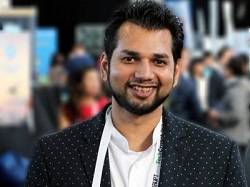
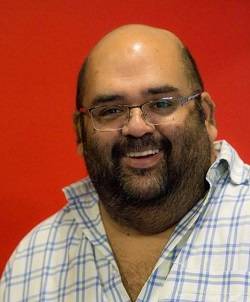





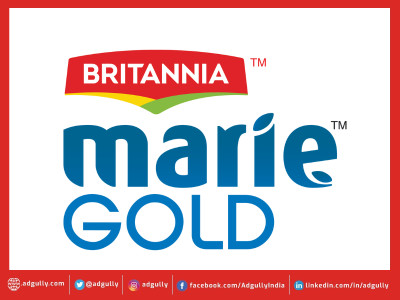

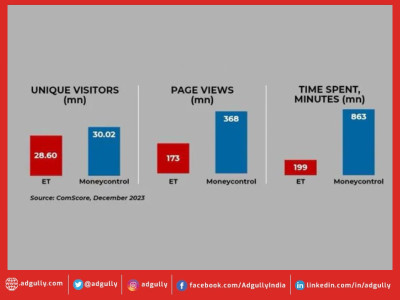




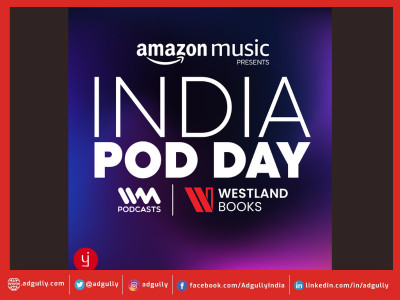


Share
Facebook
YouTube
Tweet
Twitter
LinkedIn